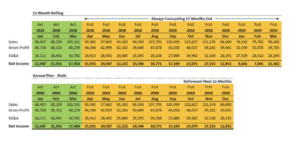
The goal of a budget is not only to track every donated cent that the NGO spends but also to end wasted spend. Budgeting requires a lot of work by many people.
Tweet this: The 2014 budget expenditure showed large tax collections of up to 16 percent more than the year before and boosted the revenue of about $4 billion and expenditure of $3.61 billion.
Budgeting is a task faced by NGOs and governments across the globe. An example of poor budget planning happened in Cambodia (South Asian state). An official document revealed that, there was a $400 million budget surplus in 2015 amid “poor budget planning and execution” and “unsatisfactory project implementation”.
The 2014 budget expenditure showed large tax collections of up to 16 percent more than the year before and boosted the revenue of about $4 billion and expenditure of $3.61 billion.
“The document also highlighted Cambodia’s debt burden. The government borrowed almost $776 million last year against payments of nearly $83 million.”
What exactly is this “animal” called budget?
According to FundsforNGOs, a budget shows an amount of money planned to raise and spend for a set purpose.
The above definition does not take into account that it takes funds to raise funds. Also that, during disaster relief purchases are often unmonitored.
NGOs should have a single point of access to view all purchases in real-time; to keep projects on track and within budget. The ability to approve purchases in real-time is key because it increases the efficiency in delivering for the cause.
Budget is needed for Planning
Nonprofit PO software like ProcurementExpress.com has the ability to handle budgeting, purchase requisitions and supplier management. A fully customizable solution that provides the transparency and accountability required for the NGOs financial activities.
Budgeting allows for planning new projects and managers can evaluate how funds are allocated and spent, from any mobile device. NGOs tend to focus more on doing good and lose sight on how money is spent.
Budget is needed for Fundraising
According to NPQ (nonprofit quarterly magazine), many small NGOs operate on a thin margin, that means any fundraising budget needs to be prioritized.
The budget is an important part of the proposal sent to potential donors. It gives a detailed account of what the NGO plans to do with the funds and what results will be achieved.
NPQ emphasizes the following criteria:
- Compare multi-year trends in your organization’s fundraising. In your comparisons, remove any gifts that you consider unlikely to repeat.
- Examine retention rates.
- Evaluate and estimate likely gift increases per donor, based on the quality of the relationship.
- Talk to all foundation and corporate donors to determine the likelihood of their repeat gifts.
- Measure donor satisfaction as you estimate gift increases and retention.
- Evaluate the effectiveness of your donor communications (e.g. readability, donor centrism, quality of stories and writing, etc.)
- Determine your DCQ (donor-centered quotient).
Budget is needed for Project implementation
It’s impossible to control a project without a budget. The most important tool for ongoing monitoring is comparing the budgeted vs actual costs.
Without an accurate budget, most of your spend will be wasted. Even more so if purchases cannot be tracked and potential errors prevented in real-time. Software like Procurementexpress.com allows the review of budgets in all stages of the project.
According to SSWM (Sustainable Sanitation and Water Management), a budget’s items are divided into two classifications: direct costs and indirect costs. Funds are usually wasted on direct costs.
What are direct costs?
- Personnel costs: They should reflect the total remuneration, including salaries plus social security charges (holiday pay, pension contribution, health insurance, etc).
- Travel and subsistence allowances: First determine what travel expenses the granting agency will allow, and then itemize the cost of each trip.
- Vehicles: Usually, this cost will be included in the travel and subsistence item. Consider the costs of renting or maintaining a car for the purposes of the project.
- Durable equipment: Any item which will retain its usefulness beyond the grant period is considered capital equipment.
Budget is needed for Monitoring and evaluation
The budget is used as a tool for evaluating the success of the NGO project. When the project is completed, estimate whether funds were spent well or wasted.
Another fundamental question to follow is: are NGOs’ objectives achieved?
What NGOs can achieve by using Procurementexpress.com for monitoring:
- Budgets can be set up and teams across all regions invited,
- Employees can submit purchase orders for immediate approval,
- Managers get notified and can approve from any mobile device,
- Reports are available in real-time.
If you’d like more info about Procurementexpress.com, please contact us: [email protected]
Leave a comment.



